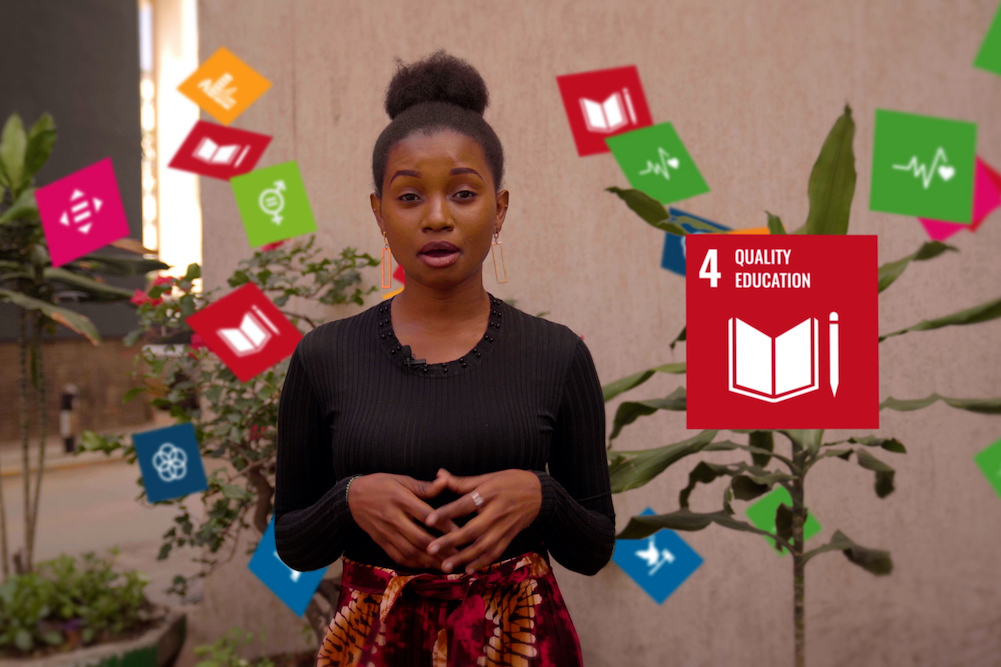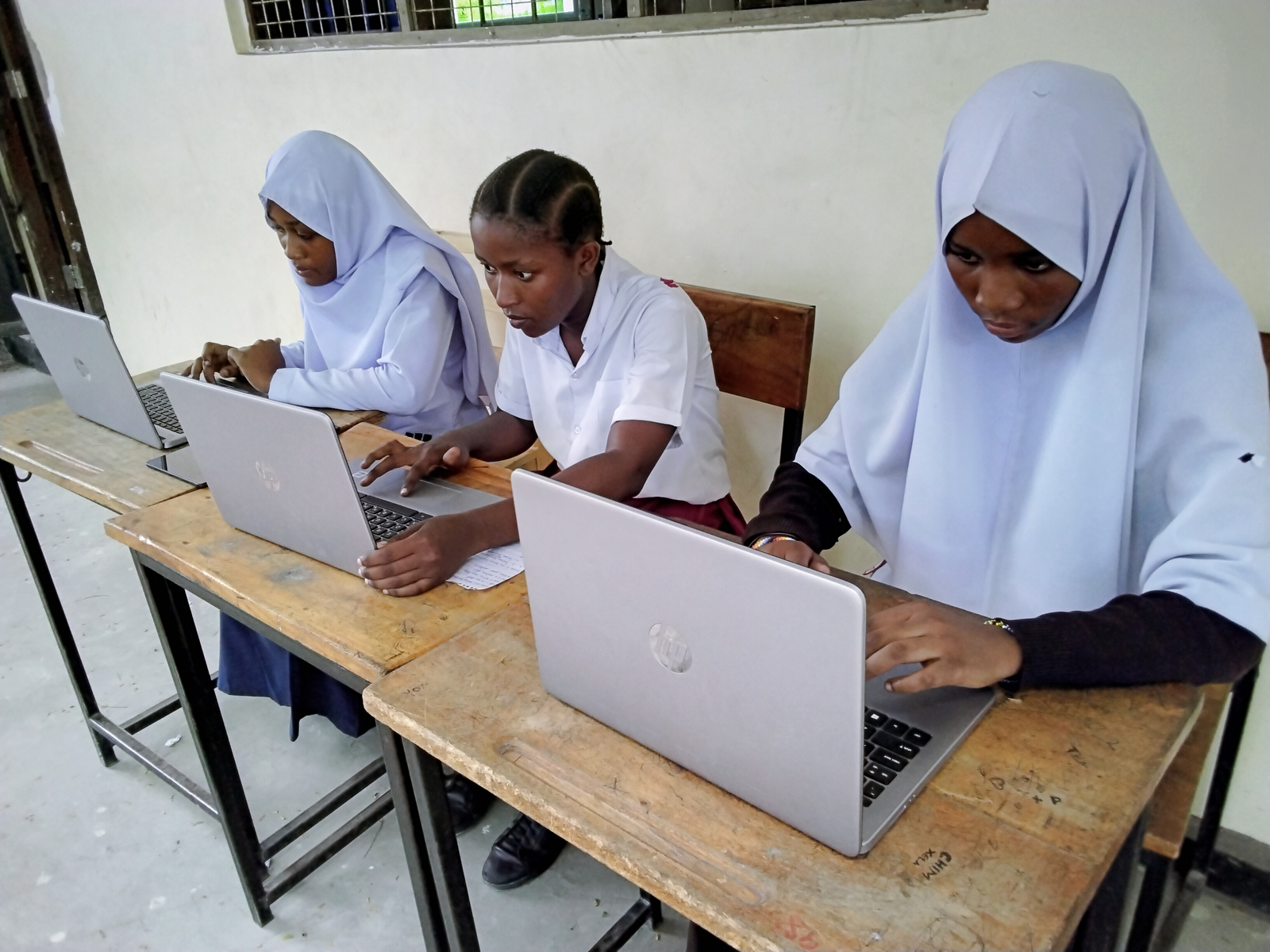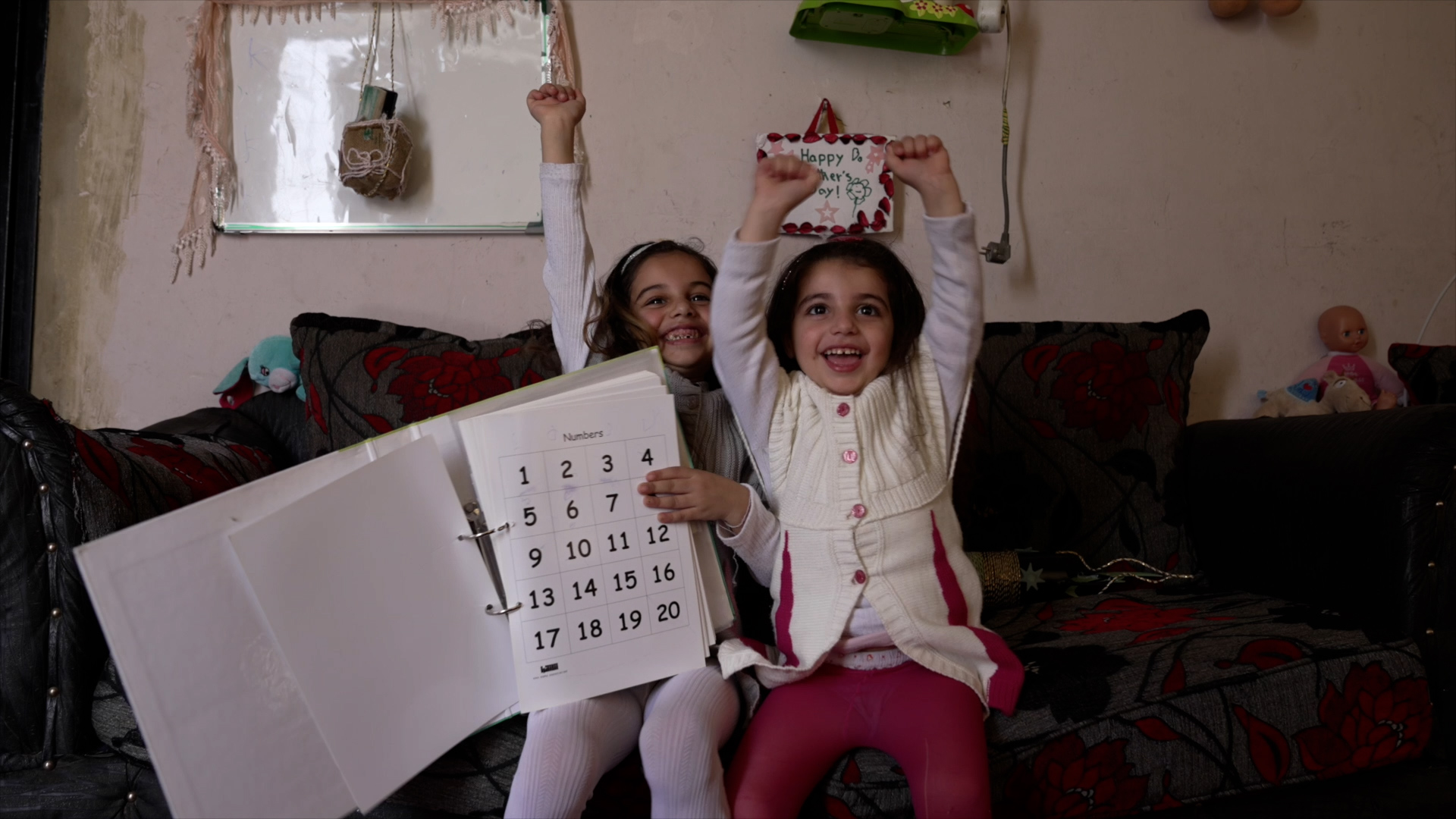
Education is key to all of the new Sustainable Development Goals
Campaigns, Education funding, Girls' education
A free, quality primary and secondary school education for every child is one of the 17 Sustainable Development Goals - but education is vital for all of the global goals announced this week.
Jump to
- What are the Sustainable Development Goals?
- Who came up with the SDGs?
- How is this different from the Millennium Development Goals?
- So what are the 17 new goals?
- Goal 4 is quality education for all - is there more to it than that?
- How does education fit into the other 16 SDGs?
- How will the SDGs be financed?
- What are the 10 separate targets within Goal 4?
Nigerian girls at primary school in Bauchi State Picture: UNICEF/Esiebo
Every girl and boy in the world should get a free, quality primary and secondary school education.
That is one of a new set of global goals which world leaders will have the opportunity to adopt at the United Nations in September.
But education is key to every one of the 17 Sustainable Development Goals (SDGs) announced this week. A World at School’s Policy and Advocacy Director Kolleen Bouchane said: “Education has a unique power to catalyse gains in other areas. Very few, if any, health or economic interventions will be sustainable without gains in education.”
Here’s a guide to what the SDGs are and how education fits into the overall package of plans to end poverty, protect the planet and ensure prosperity for all.
What are the Sustainable Development Goals?
A new agenda to end poverty, promote prosperity and help people’s wellbeing – while protecting the planet – by the year 2030. After two years of negotiations, all 193 member states of the United Nations have agreed an outcome document that will be adopted by world leaders at the Sustainable Development Summit in September.
Who came up with the SDGs?
The UN led a working group – made up of country representatives and experts on education, health and other subjects. They looked at the most pressing problems faced by people across the world and the issues that prevent their lives improving. The group came up with 17 goals and 169 specific targets – once they are finalised and agreed, the international community will work together to see them through.
How is this different from the Millennium Development Goals?
Those eight aims were set by the UN in 2000 to combat poverty and exclusion. The goals were due to be met by the end of 2015 and they included giving every child in the world a basic primary education. A lot of progress has been made on the MDGs – nine in 10 children now go to primary school. But that’s not good enough. There are still 59 million primary-age children out of school, due to child labour, child marriage, discrimination, conflict and poverty. More than one billion people continue to live in poverty and experience inequality. A new set of goals are needed for the next 15 years and the SDGs will replace the MDGs.
Launch of Back to Learning campaign in South Sudan Picture: UN Photo/JC McIlwaine
So what are the 17 new goals?
Goal 1: End poverty in all its forms everywhere.
Goal 2: End hunger, achieve food security and improved nutrition and promote sustainable agriculture.
Goal 3: Ensure healthy lives and promote well-being for all at all ages.
Goal 4: Ensure inclusive and quality education for all and promote lifelong learning.
Goal 5: Achieve gender equality and empower all women and girls.
Goal 6: Ensure access to water and sanitation for all.
Goal 7: Ensure access to affordable, reliable, sustainable and modern energy for all.
Goal 8: Promote inclusive and sustainable economic growth, employment and decent work for all.
Goal 9: Build resilient infrastructure, promote sustainable industrialisation and foster innovation.
Goal 10: Reduce inequality within and among countries.
Goal 11: Make cities inclusive, safe, resilient and sustainable.
Goal 12: Ensure sustainable consumption and production patterns.
Goal 13: Take urgent action to combat climate change and its impacts.
Goal 14: Conserve and sustainably use the oceans, seas and marine resources.
Goal 15: Sustainably manage forests, combat desertification, halt and reverse land degradation, halt biodiversity loss.
Goal 16: Promote just, peaceful and inclusive societies.
Goal 17: Revitalise the global partnership for sustainable development
Displaced children in Gaza are read a story at a school where they are sheltering Picture: UNICEF/d’Aki
Goal 4 is quality education for all – is there more to it than that?
Yes, this goal has 10 separate targets, which are listed in detail further on. The first target is: Ensure that all girls and boys complete free, equitable and quality primary and secondary education.
Kolleen said: “This is exactly what A World at School has been pushing for with our #UpForSchool Petition. This goal was supposed to be achieved by the end of 2015.
“The addition of a goal on early childhood development and pre-primary education is a great step – early and consistent access to quality learning and a safe place to play changes the future for especially the poorest and most marginalised children, families and communities.”
The other nine targets include giving equal access to education for girls, vulnerable children and those with disabilities. Kolleen added: “With a greater number of targets and goals and with those that are hardest to reach still consistently left behind, more pressure on leaders to keep these promises will be essential.”
How does education fit into the other 16 SDGs?
A child born to a literate mother is 50% more likely to survive past the age of five than a child born to an illiterate mother. If all children received a basic primary education 700,000 cases of HIV in young adults could be prevented each year, according to the Global Partnership for Education.
Kolleen said: “An extra year at school can increase a woman’s earnings by up to 20%. In the most challenging contexts, a safe place to play and learn can literally save a child’s life.
“It can provide life-saving information – including how to protect themselves from sexual abuse, landmine awareness, hand-washing and other survival skills necessary in the specific context. But it can also give the hope of a good future and give them an alternative to such practices as child labour and child marriage.”
How will the SDGs be financed?
Analysts say meeting the goals could cost between $3.3 trillion and $4.5 trillion a year in state spending, investment and aid. At a meeting in Ethiopia last month, more than 100 countries agreed on a framework to fund the SDGs by mobilising domestic resources such as taxes, leveraging private investment and channeling foreign assistance.
Kolleen said: “The international community has to ensure that sufficient resources are allocated and that they are focused on the most marginalised. This may mean looking at new sources of finance.
The UN has produced a guide on the SDGs for children
“What will certainly be needed is consistent political and public pressure of the type that the #UpForSchool Petition has delivered, with eight million people signing so far and telling world leaders they have to act to get all children into school.”
What are the 10 separate targets within Goal 4?
The goals have not been adopted yet and the targets of the goals are subject to change. In some cases, countries have not agreed on specific figures, so this has been indicated with the letter X.
- Ensure that all girls and boys complete free, equitable and quality primary and secondary education
- Ensure that all girls and boys have access to quality early childhood development, care and pre-primary education
- Ensure equal access for all women and men to affordable quality technical, vocational and tertiary education, including university
- Increase by X% the number of youth and adults who have relevant skills, including technical and vocational skills, for employment and entrepreneurship
- Eliminate gender disparities in education and ensure equal access to all levels of education and vocational training for the vulnerable, including persons with disabilities, indigenous peoples and children in vulnerable situations
- Ensure that all youth and at least X% of adults, both men and women, achieve literacy and numeracy
- Ensure all learners acquire knowledge and skills needed to promote sustainable development, including through education for sustainable development and sustainable lifestyles, human rights, gender equality, promotion of a culture of peace and non-violence, global citizenship and appreciation of cultural diversity
- Build and upgrade education facilities that are child, disability and gender sensitive and provide safe, inclusive and effective learning environments for all
- By 2020 expand by X% globally the number of scholarships for developing countries
- Increase by X% the supply of qualified teachers, including through international co-operation for teacher training in developing countries
Every girl and boy in the world should get a free, quality primary and secondary school education.
That is one of a new set of global goals which world leaders will have the opportunity to adopt at the United Nations in September.
But education is key to every one of the 17 Sustainable Development Goals (SDGs) announced this week. A World at School’s Policy and Advocacy Director Kolleen Bouchane said: “Education has a unique power to catalyse gains in other areas. Very few, if any, health or economic interventions will be sustainable without gains in education.”
Here’s a guide to what the SDGs are and how education fits into the overall package of plans to end poverty, protect the planet and ensure prosperity for all.
What are the Sustainable Development Goals?
A new agenda to end poverty, promote prosperity and help people’s wellbeing – while protecting the planet – by the year 2030. After two years of negotiations, all 193 member states of the United Nations have agreed an outcome document that will be adopted by world leaders at the Sustainable Development Summit in September.
Who came up with the SDGs?
The UN led a working group – made up of country representatives and experts on education, health and other subjects. They looked at the most pressing problems faced by people across the world and the issues that prevent their lives improving. The group came up with 17 goals and 169 specific targets – once they are finalised and agreed, the international community will work together to see them through
How is this different from the Millennium Development Goals?
Those eight aims were set by the UN in 2000 to combat poverty and exclusion. The goals were due to be met by the end of 2015 and they included giving every child in the world a basic primary education. A lot of progress has been made on the MDGs – nine in 10 children now go to primary school. But that’s not good enough. There are still 59 million primary-age children out of school, due to child labour, child marriage, discrimination, conflict and poverty. More than one billion people continue to live in poverty and experience inequality. A new set of goals are needed for the next 15 years and the SDGs will replace the MDGs.
So what are the 17 new goals?
- Goal 1: End poverty in all its forms everywhere.
- Goal 2: End hunger, achieve food security and improved nutrition and promote sustainable agriculture.
- Goal 3: Ensure healthy lives and promote well-being for all at all ages.
- Goal 4: Ensure inclusive and quality education for all and promote lifelong learning.
- Goal 5: Achieve gender equality and empower all women and girls.
- Goal 6: Ensure access to water and sanitation for all.
- Goal 7: Ensure access to affordable, reliable, sustainable and modern energy for all.
- Goal 8: Promote inclusive and sustainable economic growth, employment and decent work for all.
- SDGs empower girls graphic.gif
- Goal 9: Build resilient infrastructure, promote sustainable industrialisation and foster innovation.
- Goal 10: Reduce inequality within and among countries.
- Goal 11: Make cities inclusive, safe, resilient and sustainable.
- Goal 12: Ensure sustainable consumption and production patterns.
- Goal 13: Take urgent action to combat climate change and its impacts.
- Goal 14: Conserve and sustainably use the oceans, seas and marine resources.
- Goal 15: Sustainably manage forests, combat desertification, halt and reverse land degradation, halt biodiversity loss.
- Goal 16: Promote just, peaceful and inclusive societies.
- Goal 17: Revitalise the global partnership for sustainable development.
Goal 4 is quality education for all - is there more to it than that?
Yes, this goal has 10 separate targets, which are listed in detail further on. The first target is: Ensure that all girls and boys complete free, equitable and quality primary and secondary education.
Kolleen said: “This is exactly what A World at School has been pushing for with our #UpForSchool Petition. This goal was supposed to be achieved by the end of 2015.
“The addition of a goal on early childhood development and pre-primary education is a great step – early and consistent access to quality learning and a safe place to play changes the future for especially the poorest and most marginalised children, families and communities.”
The other nine targets include giving equal access to education for girls, vulnerable children and those with disabilities. Kolleen added: “With a greater number of targets and goals and with those that are hardest to reach still consistently left behind, more pressure on leaders to keep these promises will be essential.”
How does education fit into the other 16 SDGs?
A child born to a literate mother is 50% more likely to survive past the age of five than a child born to an illiterate mother. If all children received a basic primary education 700,000 cases of HIV in young adults could be prevented each year, according to the Global Partnership for Education.
Kolleen said: “An extra year at school can increase a woman’s earnings by up to 20%. In the most challenging contexts, a safe place to play and learn can literally save a child’s life.
“It can provide life-saving information – including how to protect themselves from sexual abuse, landmine awareness, hand-washing and other survival skills necessary in the specific context. But it can also give the hope of a good future and give them an alternative to such practices as child labour and child marriage.”
How will the SDGs be financed?
Analysts say meeting the goals could cost between $3.3 trillion and $4.5 trillion a year in state spending, investment and aid. At a meeting in Ethiopia last month, more than 100 countries agreed on a framework to fund the SDGs by mobilising domestic resources such as taxes, leveraging private investment and channeling foreign assistance.
Kolleen said: “The international community has to ensure that sufficient resources are allocated and that they are focused on the most marginalised. This may mean looking at new sources of finance.
“What will certainly be needed is consistent political and public pressure of the type that the #UpForSchool Petition has delivered, with eight million people signing so far and telling world leaders they have to act to get all children into school.”
What are the 10 separate targets within Goal 4?
The goals have not been adopted yet and the targets of the goals are subject to change. In some cases, countries have not agreed on specific figures, so this has been indicated with the letter X.
- Ensure that all girls and boys complete free, equitable and quality primary and secondary education
- Ensure that all girls and boys have access to quality early childhood development, care and pre-primary education
- Ensure equal access for all women and men to affordable quality technical, vocational and tertiary education, including university
- Increase by X% the number of youth and adults who have relevant skills, including technical and vocational skills, for employment and entrepreneurship
- Eliminate gender disparities in education and ensure equal access to all levels of education and vocational training for the vulnerable, including persons with disabilities, indigenous peoples and children in vulnerable situations
- Ensure that all youth and at least X% of adults, both men and women, achieve literacy and numeracy
- Ensure all learners acquire knowledge and skills needed to promote sustainable development, including through education for sustainable development and sustainable lifestyles, human rights, gender equality, promotion of a culture of peace and non-violence, global citizenship and appreciation of cultural diversity
- Build and upgrade education facilities that are child, disability and gender sensitive and provide safe, inclusive and effective learning environments for all
- By 2020 expand by X% globally the number of scholarships for developing countries
- Increase by X% the supply of qualified teachers, including through international co-operation for teacher training in developing countries

More news

Skills for the future give young people the best chance of success
